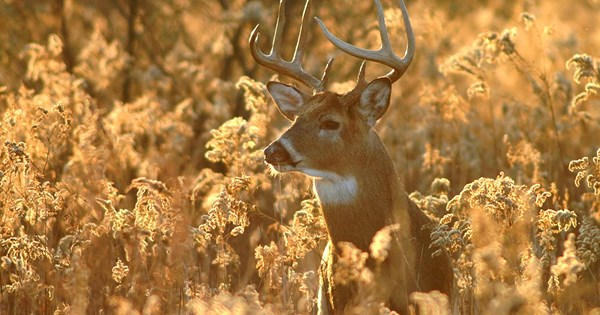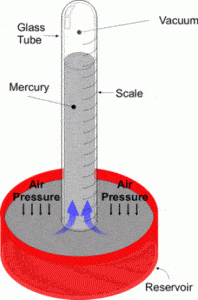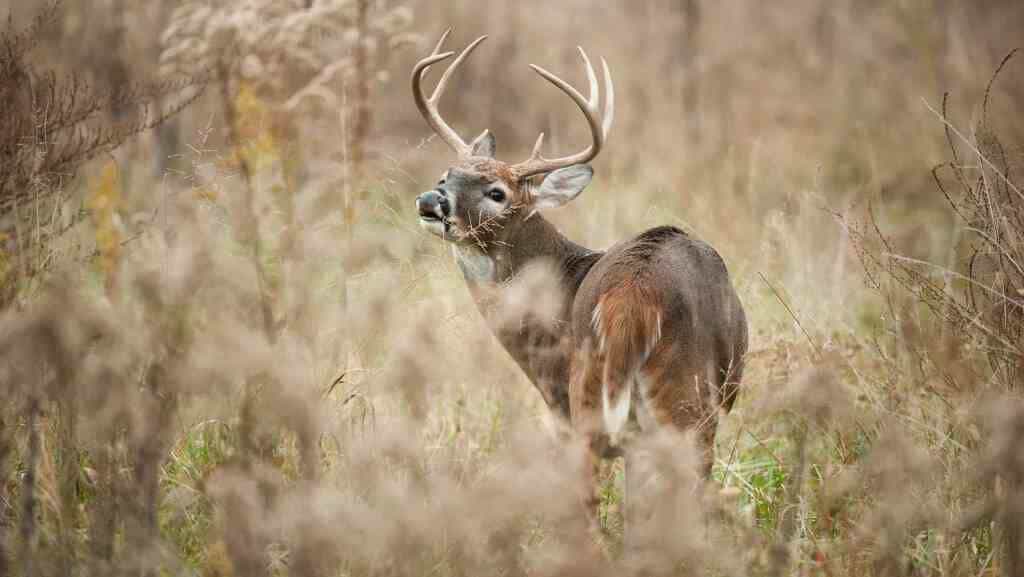What every hunter wants to know is when the biggest buck on the property going to be in front of their stand, so over the years, we have started using different indicators to tell us which days are going to be better than others. While we would all love to be in the woods all the time, that is just not possible, so we have to pick our days carefully. One of the main things we look at is the weather. Now, there are a thousand topics to go over between weather and whitetails, but here we are going to debunk the gray area of how barometric pressure affects deer movement, or if it affects it at all.

A Quick Glance
Science struggles to find a statistical change in movement based on barometric pressure, and most big hunters and brands have differing and conflicting opinions. After taking all data into account, air pressure fluctuates with other important factors like temperature and wind speed; however, barometric pressure itself does not influence deer movement.
What Is Barometric Pressure?
Barometric pressure, also known as air pressure, is simply the pressure the air exerts on the surface of the Earth. Another way to think about it is the density of air molecules in a certain area, high pressure would have many more particles than low pressure. Barometric pressure changes with the weather, so you have probably heard about it from your local meteorologist when they talk about high and low-pressure systems/fronts.

We measure barometric pressure with a barometer, and it is also on all of the most common weather apps. An average barometric pressure is 30 in-hg. Barometric pressure is measured in inches of mercury(hg), which is an odd unit, but to put it simply, a barometer works by measuring how much a glass tube that contains mercury moves up or down in a reservoir of mercury due to the air pressure, thus the odd unit.
What Science Has to Say About Whitetail Movement and Barometric Pressure
Here is where the controversy begins, if you ask 100 hunters how barometric pressure affects deer movement, you would get dozens of different answers, but about 70 of them would agree that barometric pressure has some effect on deer movement. Although if you look at all of the recent scientific studies(which most hunters tend to ignore) they all conclude the same result.
A 2010 study at Mississippi State University concluded that “In general, we found minimal evidence that weather was having an influence on deer movements. Relationships were weak and parameter estimates were small revealing little biological significance in changes in movement distance with changes in weather.” What they did find is that snow depth and the temperature has the greatest effect on the way deer move. Which is consistent with historical data and other studies. Although they did measure air pressure, they found that it, and even general weather patterns, had no statistically significant impact on whitetail movement.
This is just one study, but there are many more from credible universities saying that most of the things we think about when we look at the weather, as it relates to deer movement, does not matter at all. However, does that mean that all of our weather tactics are useless and we are wasting our time? I don’t think so.
While we may not be able to find a major change in movement statistically, a small 2-5% increase in movement, while not statistically significant, could be all we need to get that target buck to travel a bit further than his daily routine.
As a Physics and Engineering major I typically heavily lean towards what the science says. However, I know I and most other hunters have had many personal experiences with weather patterns that will make us always believe deer move better or worse in certain weather conditions.

What Big Hunters & Organizations Have to Say
Jeff Sturgis from Whitetail Habitat Solutions is one of the best habitat managers in the country and a very successful hunter. That being said, his opinion on barometric pressure may surprise you. In an interview with Exodus on Youtube, he says that “barometric pressure is not tangible, I do not believe that they can feel it”, he goes on to say you can “throw it out the window” because when barometric pressure greatly fluctuates (which is when many people say you should hunt based on pressure) what we see is a high change in temperature and wind speeds, which is what he believes makes deer move instead of the air pressure.
On the other hand, some other big names like Mark Dury (Dury Outdoors), Todd Amenrud (editor in chief at Mossy Oak), and organizations like Field & Stream, Deer & Deer Hunting all argue that Barometric pressure plays a key role in whitetail movement in one way or another. I Should also note that none of these guys explain it the same way and all of their opinions are slightly different.
Mark Dury says that in general “the higher the pressure the better the movement”. In a podcast with MeatEater, he also goes on to say that we should classify high or low-pressure relative to the average for that time of year. For example, Mark says that during the early season 30.1 could be considered high pressure, but later in the year 30.1 would be the average so high would be around 30.3 or 30.4.
Todd Amenrud was apart of the “W.M.W.M.” (What Makes Whitetails Move) study in the 80s and from the data that he and other participants gathered he said, “In my view, no other aspect of the weather has as big an influence on deer movement as the atmospheric pressure”. Likewise, other articles written by Field & Stream as well as Deer & Deer Hunting conclude that barometric pressure has a large effect on whitetail movement.
So Should You Hunt Whitetail Based On Barometric Pressure?
Honestly, with so many differing opinions and no support from science, we can not look at barometric pressure as a key indicator of how deer will move. In my opinion, it is the other weather factors that generally happen alongside pressure fluctuations that we should look at. Temperature and wind speeds are two of the most important factors in deer movement, and it just so happens that air pressure also changes with these factors. So while it is not the direct reason for deer movement, some hunters may want to use it as a reference.
Although the one thing I know for sure about nearly every aspect of deer hunting is that no one can be 100% certain about anything. So the only way to 100% know if deer will be moving is to be out in your stand all day long. So for your next sit, do not worry as much about the pressure and just get out there and see what you can see. It just might make you a better, and more successful hunter.

